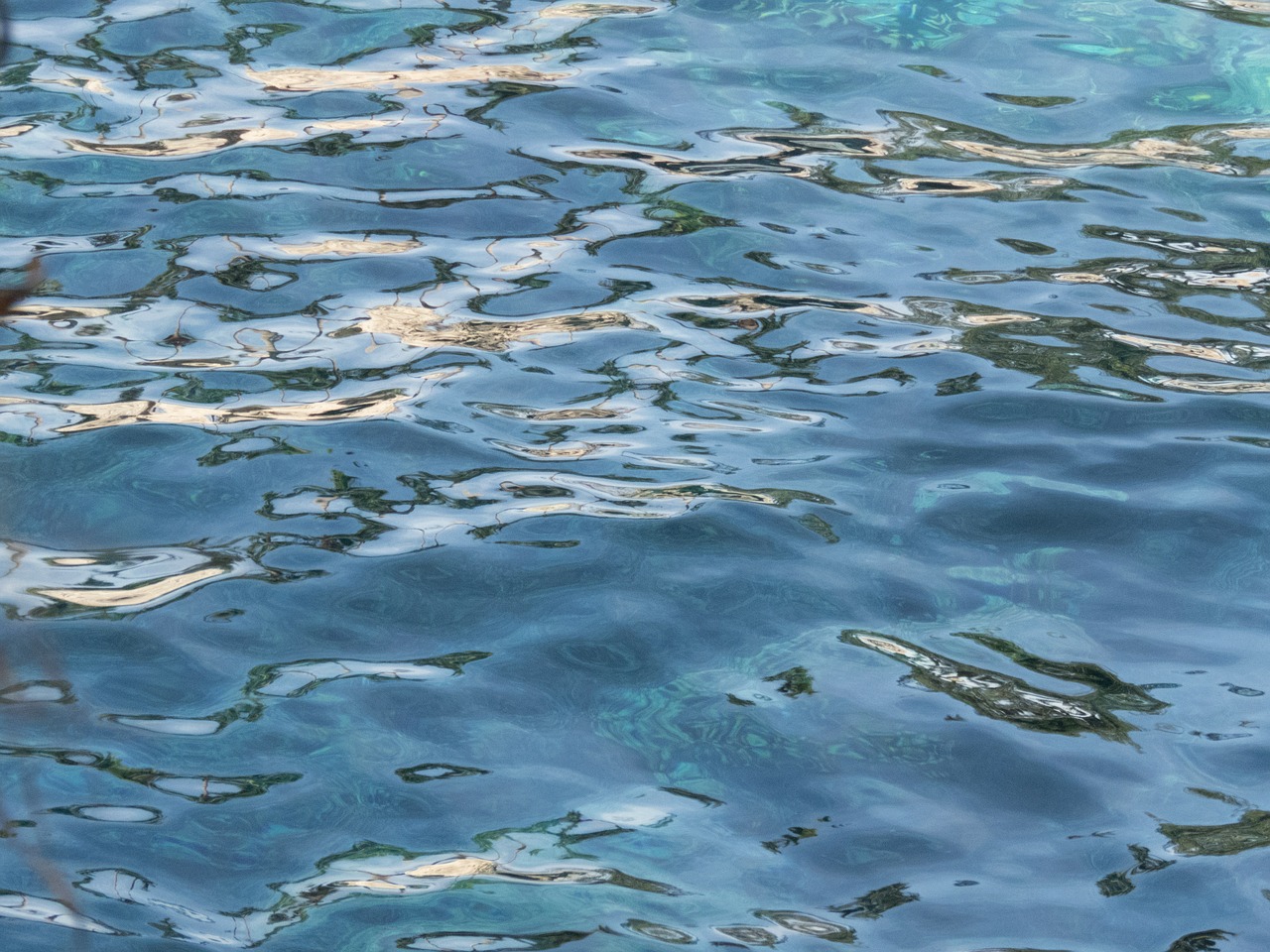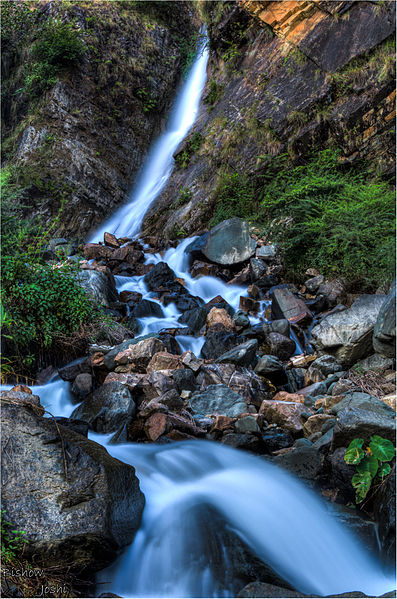Sources of Water and their Characteristics

water cycle, image source wikimedia commons
The source of water commonly determines the nature of the collection, purification, transmission and distribution works. Common sources are rainwater, surface water and ground water.
Rainwater
Rainwater is rarely used for municipal water supplies because of non-availability of large surface areas (roofs) where it can be collected. It may be used for very small communities which do not have any other source of water supply (deserts) or for areas where is very hard and unpalatable. The components of rainwater system are roof, filters and storage.Rainwater is usually collected from the roof of buildings. The roof is preferably pitched to increase the speed of runoff which in turn reduces the time the water is in contact with harmful substances. The roofing material should not secrete any harmful substances and should be resistant to weathering. Concrete, slate, plastic or tiled roofs are satisfactory while roofs made asbestos, bitumen and grass are not suitable. Collection from thatched roofs are not suitable for drinking purposes without treatment because of absorption of organic matter from the roof.
Filters are self cleaning filters which do not retain dirt and hence do not permit germination to take place on the filter material, unlike sand and gravel are used. The filter material is placed in an upright position. The self-cleaning works on the principle of cohession of water.
In some rural communities, the collected water is stored in pots and cisterns for domestic consumption. The modern practice is to design reservoirs, both underground and surface level storage tanks. Tanks are designed with calmed inlet to enable settling of sediments which are regularly flushed through a plugged drain pipe. The tank is oxygenated by directing incoming water towards the surface. Any floating suspended solid will hinder oxygen circulation, but optimal tank sizing ensures that the tank will overflow two or three times a year, through a special siphon, skimming off the floating layer. The suction pipe is placed 15cm below the surface in order to extract the cleanest water. Analysis has shown that rainwater extracted this way is very high in quality. Runoff is prevented from entering the tank by designing the top of the underground tank to be higher than the ground level.
Rainwater is suitable for washing machines, it causes no calcification in washing machines, it is free and requires no elaborate purification works and transmission networks.
But the absence of minerals in rainwater renders it insipid and when in equilibrium with atmospheric gases (carbon dioxide) it is corrosive.
Surface Water
Rivers, lakes, ponds and impounded reservoirs are classified under surface water. River water can supply water to a community throughout the year or where it is not enough it may be stored during times of flood and then supplied to the community. Because of pollution river water has to be properly treated.Deep lakes and ponds having sufficiently large surface areas can be utilized for municipal water supply. The water from these sources may be better in quality than the river water and can be used for domestic purposes without much treatment. Water can be drawn from deeper layers where the temperature is uniformly low and the plankton life is not dense.
The discharge to rivers and streams increases during floods and heavy rain during which water is stored in the soil adjacent to streams and rivers. This is called bank storage. The bank storage either supplies water to the water course or receives water from the river depending upon the level of water in the river.
Groundwater
Groundwater is formed by rainfall which permeates into the ground through the pores of rock formation and finally reaches the ground through the pores of rock formation and finally reaches the underground water table, and the water from streams, lakes and reservoirs which percolate through the soil to the underground water table. Ground water varies in purity depending on the geological conditions of the soil through which it flows. As it flows, it absorbs from the soil some of the soluble gasses and salts. If water source is ground water, the degree of treatment is greatly affected by the type of water -bearing strata.Springs
Groundwater sometimes come above the ground as a spring. It occurs in areas where the water table reaches the surface, or where the peripheral between a permeable layer of underground rock and an impermeable layer reaches the ground surface. Springs are usually found at the foot of slopes of valleys, mountains and hills and near the banks of major rivers. The water that comes out from a spring may changes in volume and contamination levels, depending on the amount of rainfall. If the surrounding land area of the spring is not protected, it can be contaminated by runoffs seeping through the soil.Wells and Boreholes
Wells and boreholes can be classified based on the depths of the water level or the method of construction and development. Based on the water level, Wells are classified into shallow wells and deep wells. They may also use different types of pump at the surface to raise the water.In shallow wells the water level always stand within the sucking distance of a pump located near or on top of the well. The sucking distance ranges from 4.5-8.5 depending on the type of pump used and the altitude of well above the sea level.
While in deep wells or boreholes the sucking distance of a pump located near or at the top of the well is above the water level. Pumps are usually located in deep wells such that the sucking distance extends far below the water level. Priming is avoided by submerging the pump in the water. It is usually sunk with drilling machines designed for constructing water extraction boreholes The machines are able to penetrate through harder material that cannot be tackled by hand digging and can therefore pass through at least one impermeable layer of rock to a productive aquifer underneath.
Conclusion
The importance of water to humans can not be overemphasized, Water is potentially useful for agricultural , industrial , household, recreational and environmental purposes. As a matter of fact, every living things require water to grow and reproduce. Hence the need to know the sources and characteristics of water must be discussed.
Reference
[1] Water resources
[2] Water sources and their characteristics
[3] Different sources of water
[4] Types of water bodies
[5] Surface Water: Rivers, Streams, And Lakes

.jpeg)

_at_St._Peter%E2%80%99s_Rambula_Mixed_Secondary_School_(5050689129).jpg)
.gif)
I remember doing this in elementary geography...Well done
Awesome post!! Keep it up and check out THIS POST as well as I have something similar.